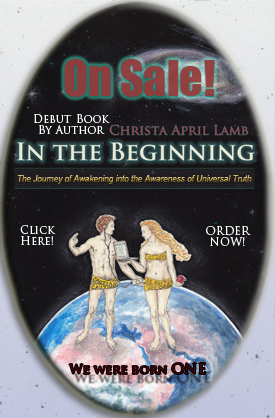Baha’i

The purpose of the symbol that appears on Baha’i ringstones and other Baha’i identity jewelry serves as a visual reminder of God’s purpose for man, and for Baha’is in particular.
| Quick Facts | | History | | Holy Dates | | Symbols | | Connection to other Religions | | Beyond Facts |
QUICK FACTS
Brief explanation:
The Bahá’í Faith is a monotheistic religion founded by Bahá’u'lláh (“buh-howluh”)a Persian nobleman from Tehran in the 1860s. He left his life of princely comfort and security for spiritual pursuits. In the face of intense persecution and deprivation, he brought humanity a stirring new message of peace and unity.Today, there are about seven million Bahá’ís worldwide, most of whom live in non-Muslim Third World countries
Members believe:
o There is only one God
o There is only one human race (God’s race)
o All the world’s religions represent stages in the revelation of God’s will and purpose for humanity.
o Bahá’u’lláh was a new and independent Messenger from God.
o The essential message of Bahá’u’lláh is that of unity.
o God as completely transcendent and ultimately unknowable
o Every person has an immortal soul.
Followers:
There are an estimated 7.4 million members in the world.
Members worship by:
o Praying each day.
o Observing the 9 holy days.
o Fasting 19 days a year.
o Working to abolish prejudice.
o Regarding work as a form of worship.
o Making at least one pilgrimage, if they are able, to the Shrine of the Bab and the houses in which Baha’u'llah lived, which are situated near the Bahá’í world headquarters.
o Not consume alcohol.
HISTORY
History gathered, collected and provided by the owner of Religion Facts.com
Our sincere thanks for their permission.
Historical and Religious Context
As Christianity was born out of Judaism and Buddhism grew out of Hinduism, the Bahá’í Faith has its roots in Shi’iteIslam. A major doctrine of “Twelver” Shi’ite Islam is the expected return of the 12th imam (successor of Muhammad), who will renew religion and guide the faithful.
The Báb
In 1844, Mirza ‘Ali Mohammad of Shiraz in Iran proclaimed the imminent appearance of a new messenger of God who would overturn old beliefs and customs and usher in a new era. He identified himself as the forerunner of this prophet, assuming the title of “the Báb” (Persian: “Gateway”).
The Báb’s teachings quickly spread throughout modern-day Iran, provoking strong opposition from both the Shi’ite Muslim clergy and the government. The Báb was arrested and, after several years of incarceration, was executed by a firing squad in 1850. Large-scale persecutions of his adherents, the Babis, followed and ultimately cost 20,000 people their lives.
Bahá’u'lláh
One of the Báb’s earliest and most ardent disciples was Mirza Hoseyn ‘Ali Nuri, who had assumed the name of Bahá’u'lláh (Persian: “Glory of God”) when he renounced his social standing and joined the Babis.
Bahá’u'lláh was arrested in 1852 and jailed in Tehran. During his imprisonment, he realized he was the prophet whose coming had been predicted by the Bab.
He was released in 1853 and exiled to Baghdad, where his leadership revived the Babi community. In 1863, shortly before being moved by the Ottoman government to Constantinople, Bahá’u'lláh declared to his fellow Babis that he was the messenger of God foretold by the Bab. An overwhelming majority of Babis acknowledged his claim and thenceforth became known as Bahá’ís.
Bahá’u'lláh was subsequently confined by the Ottomans in Adrianople (now Edirne, Turkey) and then exiled to Acre in Palestine (now ‘ Akko, Israel).
20th Century
Before Bahá’u'lláh died in 1892, he appointed his eldest son, ‘Abd ol-Baha (1844–1921), to be the leader of the Bahá’í community and the authorized interpreter of his teachings. ‘Abd ol-Baha actively administered the movement’s affairs and spread the faith to North America, Europe, and other continents. He appointed his eldest grandson, Shoghi Effendi Rabbani (1897–1957), as his successor.
The Bahá’í faith underwent a rapid expansion beginning in the 1960s, and by the late 20th century it had more than 150 national spiritual assemblies (national governing bodies) and about 20,000 local spiritual assemblies worldwide.
Persecution in Iran
Since the Bahá’í Faith’s birth, it has faced resistance and persecution from Iran. Many Bahá’ís, including the Bab, have become martyrs or imprisoned by the Iranian government.
As is often the case, the persecution has arisen from a combination of religious and social factors. Religiously, many Shi’ite Muslims regard the Bahá’í Faith as an Islamic heresy. Objectionable beliefs of the Bahá’ís include the idea that there are more prophets to come after Muhammad, that the Qur’an has been upstaged by Bahá’u'lláh’s writings, that women should play an active role in society, that there is no importance of the holy war (jihad), and that clergy are not essential due to increased literacy.
A major social factor leading to persecution of Bahá’ís is their emphasis on education, which places them in prominent occupations in society. This power and influence can be seen as threatening by the majority. Bahá’ís also deny the authority of Shi’ite jurisprudence and therefore the essence of Iran’s government.
Anti-Bahá’í sentiment increased under Ayatollah Khomeini. Although oppression slightly lessened in late 1988, Bahá’ís were still being accused of prostitution since their marriages are viewed as illegitimate, of spying since some of their conferences were in foreign cities, and of being Zionist supporters since their headquarters are in Haifa, Israel. Many Bahá’ís were arrested, tortured and executed.
The Bahá’í Faith Today
Today, the Bahá’í Faith has as many as 7 million followers worldwide and is the second-most widely distributed religion after Christianity.
HOLY DATES
Important Holy dates, Holidays, or Seasons:
o Baha’u'llah’s public declaration of his mission: April 21, 29 & May 2
o Bab’s declaration of his mission: May 23
o Passing of Baha’u'llah: May 29
o Martyrdom of the Bab: July 9
o Birth of Bab: October 20
o Birth of Baha’u'llah: November 12
SYMBOLS

Nine-pointed star
A simple nine-pointed star is generally used by Baha’is as a symbol of their Faith. The number nine has special significance in the Baha’i Revelation.
The word “Baha” (Arabic for “Glory”) corresponds to the number nine in the Arabic system of numerology, known as the Abjad system. Nine years after the announcement of the Bab in Shiraz, Baha’u’llah received the intimation of His mission in the dungeon in Tehran.
Nine, as the highest single-digit number, symbolizes completeness. As the Baha’i Faith claims to be the fulfillment of the expectations of all prior religions, this symbol, as used, for example, in nine-sided Baha’i Houses of Worship, reflects that sense of fulfillment and completeness.
The Ringstone Symbol
The purpose of the symbol that appears on Baha’i ringstones and other Baha’i identity jewelry serves as a visual reminder of God’s purpose for man, and for Baha’is in particular. The top horizontal bar represents the world of God, the Creator. The middle bar symbolizes the world of His Manifestations, unadorned. The bottom bar represents the world of man.
The vertical line joins the three horizantal bars together in the same way that the Divine Messengers of God form the link between the world of God and the world of man. The twin five-pointed stars on either side of the design represent the Bab and Baha’u'llah, the twin Messengers of God for this age. The ringstone symbol was designed by Abdu’l-Baha.
The Greatest Name
Particularly cherished by Baha’is are calligraphic forms of the word Baha known as the Greatest Name, a reference to Baha’u’llah. In this category is the middle symbol above, which is engraved on personal rings and on buildings to establish their Baha’i identity.
Another calligraphic form of the Greatest Name, at the right above, is an invocation in Arabic, “Ya Baha’u’l-Abha,” which means, “O Glory of the All Glorious.” It is displayed in Baha’i homes and places of Baha’i activity.
Symbol information gathered from www.bahai.us/bahai-symbols
CONNECTION TO OTHER RELIGIONS
Information coming soon.
Back To The Top
BEYOND FACTS
Is there a Baha’i community in your area? Search our Spiritual Directory now to find out!









